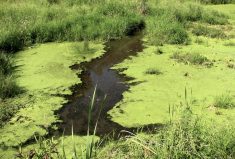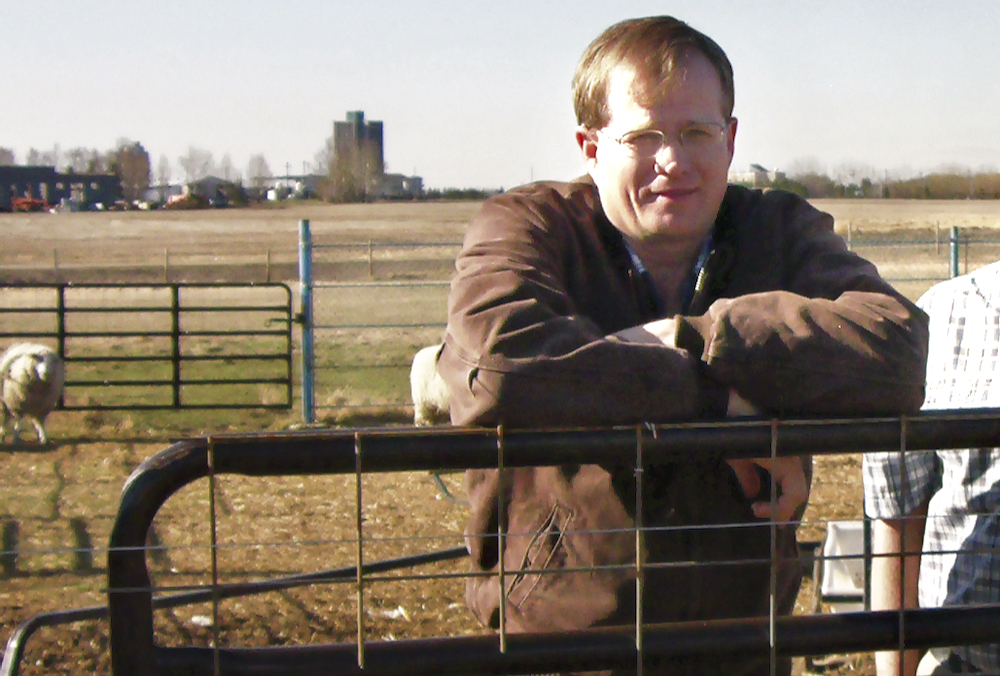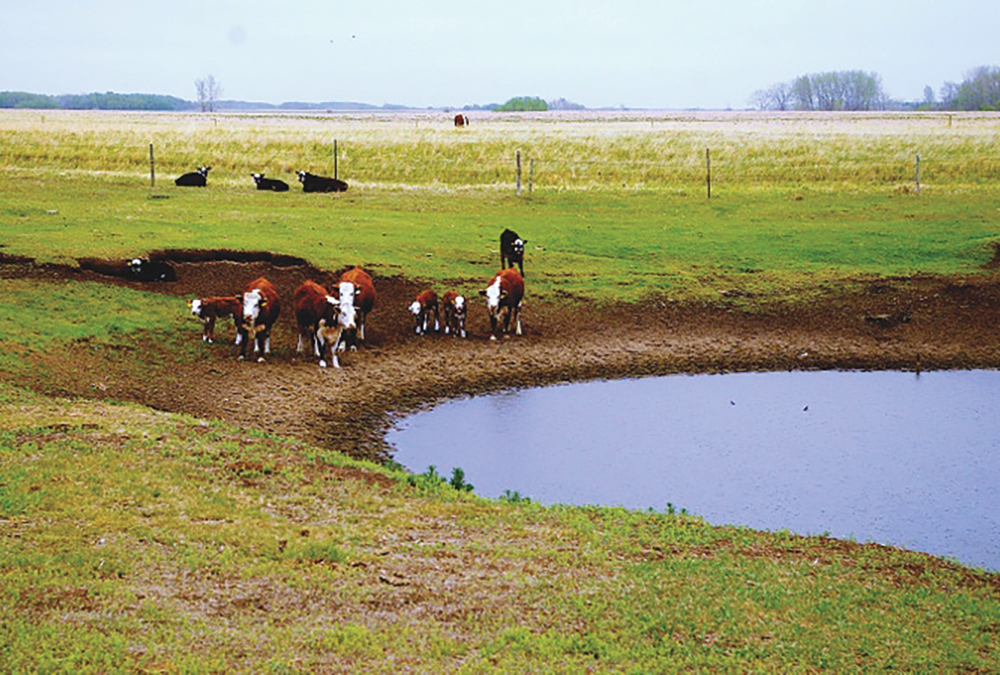When temperatures rise, you need to be on the watch for toxic bacteria in dugouts.
“Blue-green algae is actually cyanobacteria, and can produce toxins that can be very dangerous,” said Shawn Elgert, agricultural water engineer with Alberta Agriculture and Forestry. “It can cause organ damage or even death if ingested by livestock or pets.”
“If you are trying to determine the cause of poisoning, there are other potential toxins on the farm that can also cause damage to cattle, including poisonous plants such as water hemlock.”
Read Also

Farming Smarter receives financial boost from Alberta government for potato research
Farming Smarter near Lethbridge got a boost to its research equipment, thanks to the Alberta government’s increase in funding for research associations.
The first and most important step is to identify the type of growth, said Elgert. Blue-green algae can look like blue-green scum, pea soup or grass clippings suspended in the water.
If blue-green algae is suspected in a dugout, it is best to be cautious.
“You should contact a water specialist to diagnose the growth to determine if it is potentially a toxic growth,” said Elgert. “You should also remove your livestock from the water source in the interim and prevent them from accessing it. One rule of thumb is that if you can grab it as a solid mass in your hand, it is not blue-green algae.”
If blue-green algae is present, the dugout can be treated using a copper product registered for use in farm dugouts. Once treated, consumption should be restricted for up to a month.
“The use of copper will break the cells open and release the toxins if present into the water all at once,” he said. “It’s important that you stop using the water during this time so the toxins can degrade. You can follow up with aluminum sulfate and/or hydrated lime treatments afterward to remove nutrients from the water to prevent regrowth.”
There are also preventative measures that can be taken to try to avoid the problem.
“Temperature is an important factor in the growth of blue-green algae, so a deeper dugout with slopes that are not too flat would help make the dugout water cooler.”
Nutrients can be reduced by buffer strips and grassed waterways.
“Dugouts should not be built in the waterway, as sediments can bring more nutrients into the dugout and depth can be lost quickly,” said Elgert. “Aeration of the dugout can also help improve the water quality. A dye packet can also be thrown into the dugout to help prevent photosynthesis from occurring, thereby reducing the growth of blue-green algae. However, one action alone may not be enough to prevent growth.”
Wind can push the blue-green algae into highly concentrated pockets where the risk of harm is higher.
“Since blue-green algae can rise or fall in the water column, inspection of the dugout should include peering into the deeper part of the water,” he said, adding someone should go with the person doing the dugout inspection and have a rope with a flotation device attached to it.















